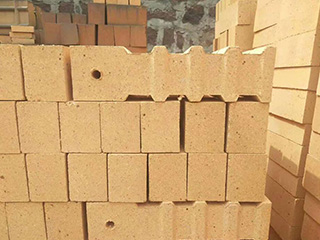Introduction:
Heat is an essential element in many industrial processes, and various applications require materials that can withstand high temperatures. Heat-resistant materials are designed to resist thermal degradation and maintain their properties even at high temperatures. These materials can be categorized into three groups: metals, ceramics, and polymers. In this guide, we will explore each group of heat-resistant materials and their applications.
Metals:
Metals are known for their excellent thermal conductivity and strength, making them a popular choice for heat-resistant applications. Some of the commonly used heat-resistant metals include:
i. Stainless steel:
Stainless steel is a type of steel that contains at least 10.5% chromium, which gives it its excellent resistance to corrosion and heat. This material is widely used in high-temperature applications such as furnace components, heat exchangers, and exhaust systems.
ii. Inconel:
Inconel is a family of superalloys that are designed to withstand high temperatures and extreme environments. These alloys contain a combination of nickel, chromium, and iron, along with other elements such as molybdenum, cobalt, and titanium. Inconel is commonly used in gas turbine components, furnace parts, and chemical processing equipment.
iii. Titanium:
Titanium is a lightweight and strong metal that can withstand high temperatures and harsh environments. This material is widely used in aerospace applications such as jet engines, aircraft frames, and spacecraft components.
Ceramics:
Ceramics are known for their excellent thermal and chemical resistance, making them an ideal choice for high-temperature applications. Some of the commonly used heat-resistant ceramics include:
i. Silicon carbide:
Silicon carbide is a ceramic material that can withstand extreme temperatures, making it an ideal material for use in high-temperature applications such as furnace components, heat exchangers, and gas turbine parts.
ii. Alumina:
Alumina is a ceramic material that is widely used in high-temperature applications due to its excellent thermal and chemical resistance. This material is commonly used in furnace components, thermocouple protection tubes, and electronic components.
iii. Zirconia:
Zirconia is a ceramic material that is known for its excellent mechanical strength and thermal shock resistance. This material is commonly used in applications such as thermal barrier coatings, cutting tools, and dental implants.
Polymers:
Polymers are organic materials that are known for their excellent chemical resistance and flexibility. Some of the commonly used heat-resistant polymers include:
i. Polyimides:
Polyimides are a family of polymers that are known for their excellent thermal and chemical resistance. These materials are commonly used in high-temperature applications such as aerospace components, electronics, and industrial coatings.
ii. PEEK:
PEEK (Polyether ether ketone) is a high-performance polymer that can withstand high temperatures and harsh environments. This material is commonly used in aerospace, automotive, and oil and gas applications.
iii. Fluoropolymers:
Fluoropolymers are a family of polymers that are known for their excellent chemical resistance and non-stick properties. These materials are commonly used in high-temperature applications such as coatings, electrical insulation, and sealing materials.

Conclusion:
Heat-resistant materials are essential for various industrial applications that require materials to withstand high temperatures and harsh environments. The choice of the appropriate heat-resistant material depends on the specific application and operating conditions. Metals such as stainless steel, inconel, and titanium are commonly used in high-temperature applications due to their excellent thermal conductivity and strength. Ceramics such as silicon carbide, alumina, and zirconia are known for their excellent thermal and chemical resistance and are commonly used in furnace components and electronic components. Polymers such as polyimides, PEEK, and fluoropol ymers are known for their excellent chemical resistance and flexibility and are commonly used in aerospace, automotive, and oil and gas applications.
When selecting a heat-resistant material, it's important to consider factors such as operating temperature, thermal conductivity, chemical resistance, mechanical strength, and cost. It's also essential to consider the manufacturing process, as some materials may be more challenging to produce than others.
In addition to the materials themselves, it's important to consider other factors such as coatings and surface treatments that can enhance the performance of heat-resistant materials. For example, thermal barrier coatings can be applied to metals and ceramics to improve their resistance to high temperatures and thermal shock.
In conclusion, heat-resistant materials are essential for various industrial applications that require materials to withstand high temperatures and harsh environments. The choice of the appropriate heat-resistant material depends on the specific application and operating conditions. Metals, ceramics, and polymers are the three main groups of heat-resistant materials, each with their own unique properties and applications. When selecting a heat-resistant material, it's important to consider factors such as operating temperature, thermal conductivity, chemical resistance, mechanical strength, and cost.
Contact: Mgr. Han
Phone: 0086-13589497465
Email: 1255953279@qq.com
Add: Industrial Area of Lingzi Town,Zichuan District,Zibo City, Shandong,China